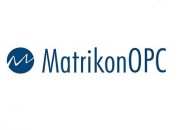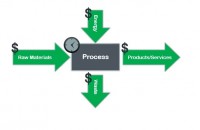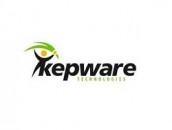 Mirion Technologies has contracted with Schneider Electric to use its Wonderware eDNA historian software as the information management system for the Radiation Monitoring System (RMS) upgrade at AEP’s D.C. Cook nuclear power plant. The eDNA RadServ solution interfaces directly with Mirion’s radiation monitors being installed at the plant and is used to notify operators when radiation levels reach predefined thresholds.
Mirion Technologies has contracted with Schneider Electric to use its Wonderware eDNA historian software as the information management system for the Radiation Monitoring System (RMS) upgrade at AEP’s D.C. Cook nuclear power plant. The eDNA RadServ solution interfaces directly with Mirion’s radiation monitors being installed at the plant and is used to notify operators when radiation levels reach predefined thresholds.
As part of the contract, Wonderware eDNA display screens are being created for real-time visualization of data for each radiation monitor and detector at the plant. The screens highlight radiation levels and the status of the monitor and its corresponding detectors -- whether normal, maintenance, or alarm -- in addition to other user-defined variables. The software includes the ability to generate standard radiation monitoring reports that include both real-time and historical data, such as source check, channel checks and system performance audits, in addition to custom reports.
“Wonderware eDNA has been installed at the D.C. Cook plant for more than a decade, and we are excited that this technology continues to be used in this RMS upgrade and for numerous other data-intensive projects in the power industry,” said Rob McGreevy, Vice President of Information, Operations at Schneider Electric.
Wonderware eDNA’s RadServ Radiation Monitoring System is a reliable solution for centralized monitoring and control of radiation field units. Overall, the Wonderware eDNA enterprise historian is equipment agnostic and is used in the power industry to collect, store, display, analyze and report on operational and asset health related information.
Jordan Hydro 6 Sandals
 Power generation, transmission, and distribution utilities provide critical services to people every day. A proper redundant architecture can prevent failures from leading to loss of control or a disruption of electrical service. In order to ensure the constant operation of applications, industry leaders turn to OPC vendors and products like Matrikon OPC that provide mission critical redundancy.
Power generation, transmission, and distribution utilities provide critical services to people every day. A proper redundant architecture can prevent failures from leading to loss of control or a disruption of electrical service. In order to ensure the constant operation of applications, industry leaders turn to OPC vendors and products like Matrikon OPC that provide mission critical redundancy. White paper by Invensys: The end users of modern industrial systems are constantly searching for methods of improving the availability and maximizing the efficiency of those systems without compromising the quality of their offerings or safety of their operations teams. One of the areas where improvements can have significant impacts in this pursuit is quite literally star ing them in the face; the human machine interface used to control and operate these systems. By implementing improvements in the mechanisms used to control and operate industrial systems, operations teams can significantly improve both the business value and the safety of their industrial systems.
White paper by Invensys: The end users of modern industrial systems are constantly searching for methods of improving the availability and maximizing the efficiency of those systems without compromising the quality of their offerings or safety of their operations teams. One of the areas where improvements can have significant impacts in this pursuit is quite literally star ing them in the face; the human machine interface used to control and operate these systems. By implementing improvements in the mechanisms used to control and operate industrial systems, operations teams can significantly improve both the business value and the safety of their industrial systems. I have a 5 MB connection out to my remote sites in the field. For each site, I need to poll for status, alarm, and historical data. If I have one hundred sites, how fast can I poll each data set? How long will it take to send a control signal? Do I need to upgrade the connection? Downgrade?
I have a 5 MB connection out to my remote sites in the field. For each site, I need to poll for status, alarm, and historical data. If I have one hundred sites, how fast can I poll each data set? How long will it take to send a control signal? Do I need to upgrade the connection? Downgrade? Case Study: Kepware Technologies, a software development company focused on communications for automation, announced today that its flagship product, KEPServerEX, has been integrated with Molex Incorporated's SIS shop floor program to significantly increase operational efficiencies and interoperability across numerous locations. By using KEPServerEX, Molex can now support multiple PLCs, process monitors, and controllers from a variety of vendors using a single communications platform.
Case Study: Kepware Technologies, a software development company focused on communications for automation, announced today that its flagship product, KEPServerEX, has been integrated with Molex Incorporated's SIS shop floor program to significantly increase operational efficiencies and interoperability across numerous locations. By using KEPServerEX, Molex can now support multiple PLCs, process monitors, and controllers from a variety of vendors using a single communications platform.